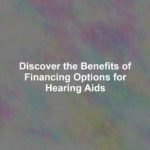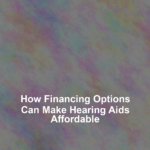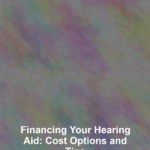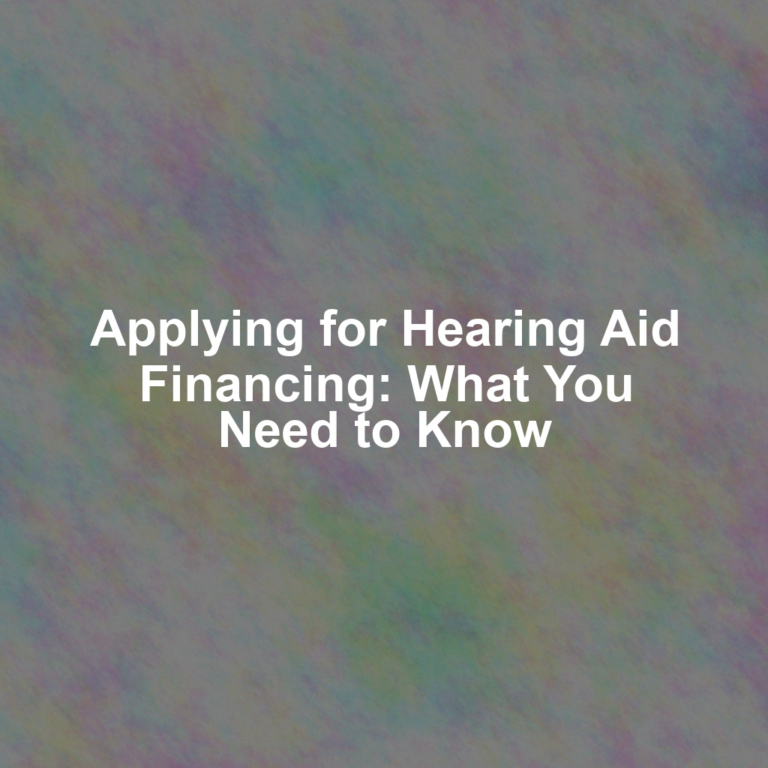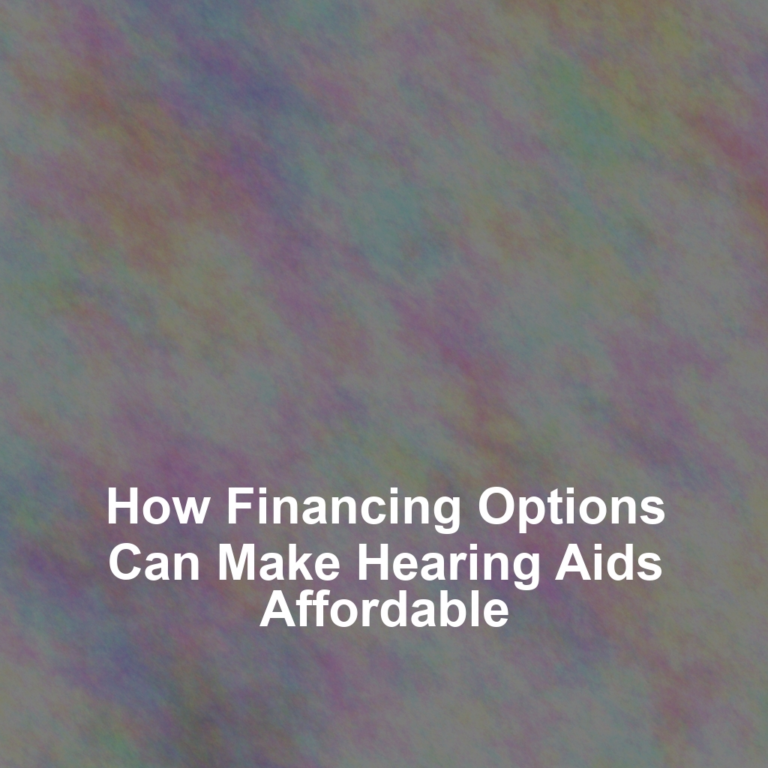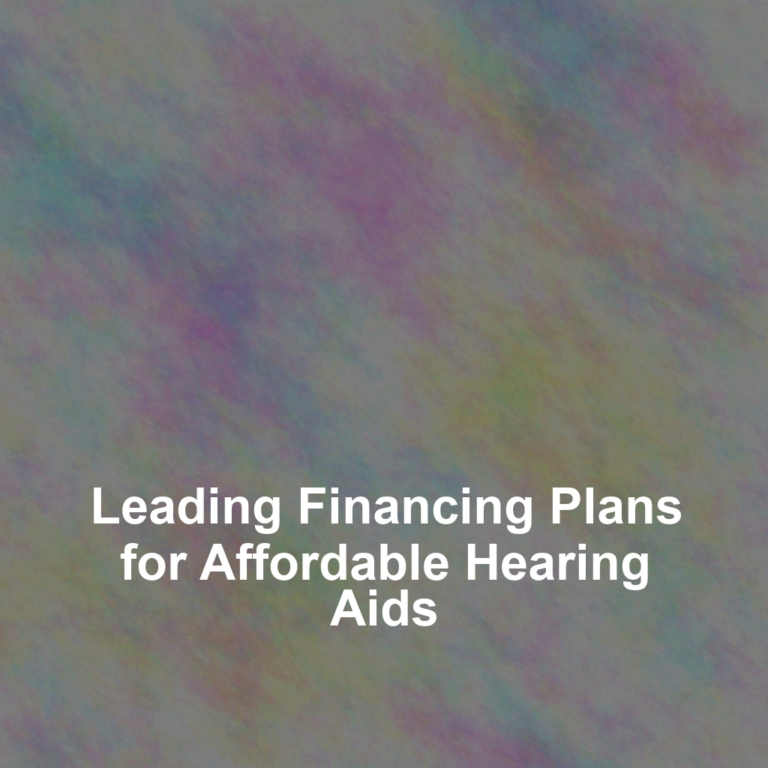Facing the financial facets of purchasing hearing aids can feel formidable, yet financing options furnish a flexible pathway to profound auditory improvement. YouG??re aware that the costs associated with high-quality hearing aids can be steep, and paying out of pocket isnG??t always practical.
By considering financing solutions, youG??re not only easing the immediate economic burden but also investing in your long-term quality of life without the upfront financial strain. As you navigate the nuances of available payment plans, youG??ll discover that they can be tailored to suit your budget, possibly improve your credit score over time, and sometimes even integrate with insurance benefits.
With these possibilities in hand, itG??s worth exploring how such financial flexibility can transform the way you approach this crucial health investmentG??letG??s examine why these options might be the key to unlocking better hearing without breaking the bank.
Overcoming Cost Barriers
Navigating the cost of hearing aids, youG??ll discover various financing options designed to ease the financial burden. As you delve into the market, youG??ll find that the price of these essential devices can be steep, but donG??t let sticker shock deter you. ThereG??s a range of strategies to manage the expense, ensuring that improved hearing isnG??t out of your reach.
You might start by checking with your insurance provider; some plans cover a portion of the cost, or at least offer discounts. If your insurance falls short, consider a payment plan directly from the hearing aid provider. Many offer interest-free periods, allowing you to spread the cost over manageable monthly payments without the sting of additional fees.
Alternatively, look into healthcare credit cards, which are specifically designed for medical expenses not covered by insurance. They often come with promotional financing terms that can soften the immediate financial hit. And donG??t forget to research charitable organizations and foundations; they may offer grants or assistance programs for those who qualify.
Lastly, earmark a flexible spending account (FSA) or health savings account (HSA) for this purpose. Using pre-tax dollars can save you a significant amount, making your journey to better hearing more affordable.
Flexible Payment Solutions
Exploring flexible payment solutions, youG??ll find that spreading the cost of hearing aids over time can make the investment more manageable. Rather than paying a large sum upfront, you can take advantage of monthly payment plans that fit within your budget. This approach doesnG??t just ease the financial burden; it also allows you to access higher-quality devices that might otherwise be out of reach.
With these flexible options, youG??re not restricted by immediate affordability. Instead, you can focus on the features and quality of the hearing aid that best suits your needs. Many hearing care providers partner with financing companies to offer plans with low or even no interest for a certain period. ItG??s essential, however, to read the fine print and understand the terms before committing to ensure that youG??re comfortable with the payment schedule and any potential interest rates that may apply after an introductory period.
Keep in mind that some plans may require a credit check, while others offer guaranteed financing regardless of credit history. By doing your homework and comparing options, youG??ll be in a better position to make an informed decision that ensures your hearing health without straining your finances.
Enhancing Accessibility
While flexible payment solutions make hearing aids more financially attainable, enhancing accessibility also involves addressing the availability and support services that ensure everyone can obtain the hearing assistance they require. YouG??ve got to consider how hearing aids can be made accessible to all who need them, regardless of their location or socioeconomic status. This means looking beyond just the price tag and examining the overall support system that surrounds the use of hearing aids.
To paint a clearer picture for you, hereG??s what enhancing accessibility can involve:
-
Widening Distribution Networks: Ensuring hearing aids are available in more locations, including remote and underserved areas, so you donG??t have to travel far or face obstacles to get the help you need.
-
Educational Outreach: Providing you with comprehensive information about hearing loss and the solutions available, empowering you to make informed decisions about your hearing health without feeling lost or overwhelmed.
-
Post-Purchase Support: Offering ongoing services such as fitting adjustments, maintenance, and counseling to ensure that once youG??ve got your hearing aids, youG??re set up for success and can navigate any challenges that come your way.
Credit Score Improvement
Improving your credit score can significantly expand your options for financing hearing aids, making them more affordable and within reach. A higher credit score often leads to lower interest rates and better terms, which means youG??ll pay less over time. To start boosting your score, youG??ll want to focus on paying your bills on time, every time. Consistency is key here.
You should also work on paying down existing debt, especially high-interest credit card balances. Lowering your credit utilization ratio, which is the amount of credit youG??re using compared to your total credit limit, can have a positive effect on your score.
DonG??t forget to check your credit reports regularly for any inaccuracies that could be dragging your score down. If you find errors, dispute them with the credit bureaus.
Insurance and Benefits Integration
After youG??ve worked on enhancing your credit score, consider how your insurance and benefits might help cover the cost of hearing aids. Many insurance plans have specific provisions for hearing health, though coverage can vary widely. YouG??ll want to look into your planG??s details or contact your insurance provider to understand the extent of whatG??s covered. ItG??s not just about whether theyG??ll pay for the devices, but also how much support youG??ll get for fittings, maintenance, and follow-up care.
To give you a clearer picture, here are some points to keep in mind:
-
Check Your Policy: Some insurance plans cover a portion of the cost of hearing aids, while others may provide an allowance every few years. Determine what your plan states regarding hearing aid coverage.
-
Health Savings Accounts (HSAs) and Flexible Spending Accounts (FSAs): If you have an HSA or FSA, you can often use these pre-tax dollars to pay for hearing aids, effectively reducing the cost.
-
Additional Benefits Programs: Look into programs like Veterans Affairs (VA) benefits or state vocational rehabilitation agencies, which may offer additional help if you qualify.
DonG??t overlook these resources as they can make a significant difference in your out-of-pocket expenses. ItG??s worth taking the time to explore all your options for insurance and benefits integration.
Conclusion
YouG??ve explored how financing options can transform hearing aid affordability. By breaking down cost barriers, offering flexible payments, boosting accessibility, and potentially improving your credit score, these options integrate seamlessly with insurance benefits.
Embrace the financial flexibility that empowers you to prioritize your hearing health without the upfront financial strain. ItG??s a smart move towards better hearing and financial peace of mind. Start your journey to clearer sound today, with a financing plan that fits your budget.


